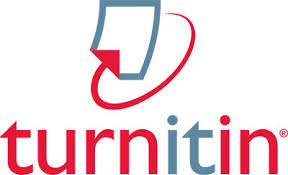P-ISSN: 2518 - 5764
E-ISSN: 2227 -703X
These instructions contain three sections, namely: (research template, writing references and instructions for authors), and as below:
Article Title
Author Name*
Department; College; University; Country.
Email:
ORCID:
For Example:
Department of Economics, College of Administration and Economics, University of Baghdad, Iraq.
E-mail: [email protected]
Orcid: https://orcid.org/0000-0000-0000-0000
*Corresponding author:
Abstract
This paper addresses the critical issue of the effectiveness of online learning in higher education. Using constructivist learning theory and self-determination theory as a framework, a comparative study of online and face-to-face learning environments was undertaken. The results indicate that online learning can be equally effective as traditional learning, provided certain design principles are followed. This research makes a significant contribution to the field of educational technology by offering practical guidelines for designing effective online courses. The social implications of this research are increased access to education and greater flexibility for learners. The unique value of this study stems from its longitudinal design and its focus on student engagement and motivation.
Keywords: at least 5 key words
|
|
This work is licensed under a Creative Commons Attribution-NonCommercial 4.0 International (CC BY-NC 4.0) |
General Note:
The appropriate length would be 150-250 words and it is preferable that the “Abstract” contains 1-2 in-text citations of the sources mentioned in the list of references that the research is based on or that the research contributes to.
The paper should be divided into clearly defined and numbered structural parts (1. Introduction, 2. Literature review and Hypothesis Development, 3. Research Methodology, 4. Results, 5. Discussion of Results, 6. Conclusion.); each subsection should be numerated as well. Please, adjust your titles of the sections.
“Introduction” section Condition that it includes the following elements: Background; Justification and problem statement. The text of the introduction should be continuous, without being divided into sub-titles. Also, add one more paragraph describing in detail the general structure of the paper. (e.g., The structure of this paper is as follows. Section 2 reviews the relevant literature. Section 3 analyses the methodology that has been used to conduct empirical research on...)
“Literature Review And Hypothesis Development” section it is important to add a few more references of the recent years (2019-2024) to make the paper more citable.
“Methodology” section should also contain description of alternative methods that would be suitable for conducting the research.
The “Results” section should also include discussions (at least 5-7 sentences). If more, please separate it as a structural part.
We recommend specifying more deeply why is important for future research (section “Conclusion”) and whether there are some limitations of the research. Also, in this section The text of the should be continuous, without being divided into sub-titles.
Editorial Note
The length of the paper should amount to no more than 8,000 words.
Add at least 3 JEL classification codes for your research. You can use the link: https://www.aeaweb.org/jel/guide/jel.php
The (APA) method is relied upon for citing sources in the manuscript, and the use of (MENDELEY) software is required. The number of sauces should not be less than 30 and should not exceed 60.
Figures and Tables:
- Authors are asked to be careful when including numbers through figures, drawings, and tables. All numbers must be legible (particularly with good accuracy) and must be interpretable and readable, even if a black-and-white copy is reproduced.
- Avoid including images or (screenshot images) of spreadsheets in your paper
The author must submit revisions required by reviewers within a maximum period of one month.
All submissions must meet the following requirements.
Articles submitted to the journal should not have been published before in their current or substantially similar form, or be under consideration for publication with another journal. Please see JEAS originality guidelines for details. Use this in conjunction with the points below about references, before submission i.e. always attribute clearly using either indented text or quote marks as well as making use of the preferred Harvard style of formatting. Authors submitting articles for publication warrant that the work is not an infringement of any existing copyright and will indemnify the publisher against any breach of such warranty. For ease of dissemination and to ensure proper policing of use, papers and contributions become the legal copyright of the publisher unless otherwise agreed.
The editor may make use of Turnitin software for checking the originality of submissions received.
The names and email addresses entered in this journal site will be used exclusively for the stated purposes of this journal and will not be made available for any other purpose or to any other party.

The manuscript submitted for publication are sent to the e-mail to plagiarism check: [email protected]
